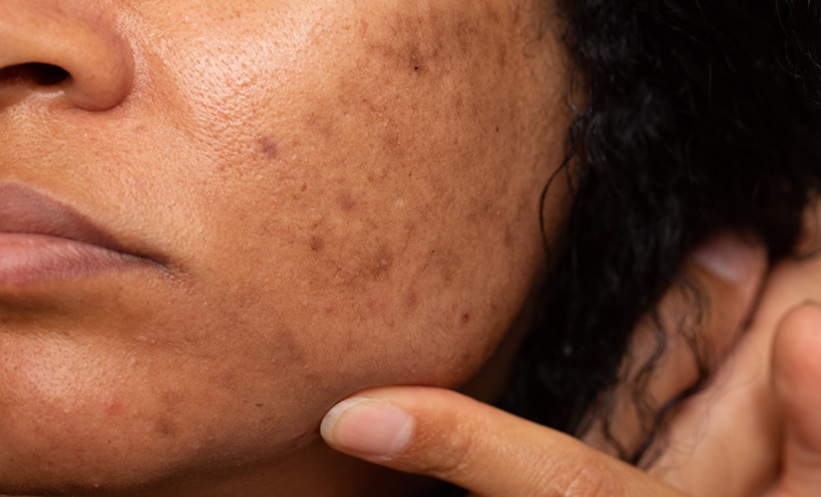THIS YEAR, the European Academy of Dermatology and Venereology (EADV) adopted a pioneering hybrid format for its congress, allowing delegates to attend onsite in Milan, Italy, as well as online. Clinicians and academics came together with one common goal: to build an international community that develops, shares, and adopts best practices within the fields of dermatology and venereology. With over 600 speakers across more than 170 sessions, EADV President Alexander Stratigos expressed his belief that this year’s EADV Congress “will allow you to innovate your daily practice and advance patient care with the best research.” Stratigos continued: “The event will be a chance to reconnect with experts in your field and truly foster scientific collaboration.”
Stratigos concluded the President’s Letter by encouraging participants to “take part in this important appointment and join the entire dermatology and venereology community to immerse in science, innovation, and networking.” This year’s conference certainly embodied Stratigos’ vision of the EADV experience.
As with previous EADV conferences, nail disorders were a key topic in the 2022 scientific programme, covering aspects such as onychoscopy, nail psoriasis, onychomycosis, melanoma of the nail, and trachyonychia. Our compelling feature is based on one of these sessions, and explores best practices for onychomycosis, including updates in topical, oral, and combination treatments as well as recommendations for specialist referral. This is complemented by our EADV abstract highlights, which focus on dermoscopy when examining patients with nail psoriasis, and the use of a novel topical cosmetic plus systemic therapy to improve onychomycosis outcomes.
Furthermore, our EADV abstract highlights shine a light on urticaria, providing insights into sequifenadine for the treatment of chronic urticaria in patients after COVID-19; sharing results from a systematic review of familial aquagenic urticaria; and evaluating COVID-19 vaccination rates, vaccination reactions, and disease activations in patients with chronic spontaneous urticaria. In addition, we are delighted to feature an abstract review describing a case of extragenital lichen sclerosus with a prominent rainbow pattern under polarised dermoscopy. Written by the presenters, this will hopefully prove a valuable resource for other practitioners when they encounter similar clinical scenarios.
Summaries of highly relevant EADV press releases have also been included in this issue of EMJ Dermatology, outlining the development of a non-invasive skin immune biomarker test to aid in the prediction of paediatric eczema, the use of a novel imaging technique to improve the accuracy of diagnosis for basal cell carcinoma, and the association between vitamin D deficiency and overall survival for patients with skin cancer.
EADV Congress 2022 was notable for its range of nurse-dedicated events, with presentations on the key role of nurses and nurse practitioners in supportive oncodermatology, and the therapeutic education of patients with atopic dermatitis. Of note, EMJ had the unique opportunity to speak with Christa De Cuyper, Chair of the EADV Nurse Association Working Group and Task Force Facilitator. De Cuyper co-chaired the EADV’s 2021 Nurses in Dermatology Practice event, and talked about the standout sessions and important take-home messages from this event. Moreover, De Cuyper discussed how the EADV can continue supporting the education of nurses and medical assistants in the dermato-venereology community. This interview can be found within the journal, and is not to be missed.
Although EADV Congress 2022 has closed its doors, preparations are already underway for EADV Congress 2023. Whatever the future of dermato-venereology holds, the annual EADV Congress will remain crucial for the generation and exchange of scientific knowledge. With this in mind, we look forward to being part of the international dermatology and venereology community at next year’s meeting in Berlin, Germany. Until then, read on for our key learnings from EADV Congress 2022.
Predicting Paediatric Eczema Using Novel Skin Biomarker
ANALYSIS of tape strips, a painless and non-invasive skin cell collection method, taken from the skin of term and pre-term neonates, revealed an immune biomarker that predicts both the development and severity of atopic eczema in the first 2 years of life. This data was presented by lead author and co-researcher Anne-Sophie Halling, Department of Dermatology and Venereology, Bispebjerg Hospital, University of Copenhagen, Denmark, at the 31st EADV Congress, held in Milan, Italy, on 7th September 2022.
Tape strips from 450 babies were examined to identify whether any skin or immune biomarkers associated with development of paediatric atopic eczema could be identified. The strips were taken from the dorsal aspect of the hand at 0–3 days post-birth, and again at 2 months of age for babies born at term (n=300), and from the interscapular region of pre-term infants (n=150) once they had reached 2 months of age. The babies included in the study were subsequently followed up for 2 years for the development of atopic eczema.
The Barrier dysfunction in Atopic newBorns studY (BABY) found that raised levels of thymus and activation–regulated chemokine (TARC) at 2 months of age was associated with a more than two–fold likelihood of developing eczema in the first 2 years of life, irrespective of filaggrin gene mutations and parental atopy status. The study also found that higher levels of TARC were associated with increased eczema severity. In addition to this, two further skin biomarkers, IL-8 and IL-18, were identified as being associated with moderate–to–severe paediatric atopic eczema. Halling highlighted that this is the first study showing how non-invasive skin biomarkers “can be used to predict the subsequent onset and severity of paediatric atopic eczema” and concluded that the study “provides a window of opportunity to develop targeted trials and prevent cases of eczema from occurring.”
These promising findings highlight how non-invasive identification of early-life skin biomarkers, such as elevated TARC levels, could enable healthcare professionals to develop and implement early and effective preventative and management strategies for these children, to help prevent and control their eczema symptoms, improve quality of life, and initiate treatment prior to developing severe symptoms or secondary complications, such as infection, occur.
Improvement in Accuracy of Diagnosis for Basal Cell Carcinoma
A NOVEL imaging technique has been found to significantly improve the accuracy of the diagnosis of basal cell carcinoma (BCC) when compared to clinical and dermoscopic examinations alone. BCC is primarily caused by sun exposure, or the use of tanning beds. This cancer subtype grows slowly, and rarely spreads. Worldwide, the incidence of BCC has doubled in the last two decades.
New research, carried out by the Department of Dematology, Hôpital Erasme, Université Libre de Bruxelles, Belgium, was presented at the 31st EADV Congress in Milan, Italy. The study analysed instances of 303 lesions, including 173 BCC lesions and 130 BCC-imitators.
The study discovered that through the use of a new, non-invasive technology for skin imaging, called line-field confocal optical coherence tomography (LC-OCT), diagnosis is far more accurate. LC-OCT provides detailed three-dimensional images on a cellular level, and increased diagnostic accuracy for BCC in comparison to BCC-imitators (including seborrheic keratosis, inflammatory conditions, and squamous cell carcinoma) by 12% in comparison to dermoscopic examination, the current most commonly used skin cancer diagnostic technique (from 85% to 97%). Using LC-OCT also significantly increased diagnostic accuracy by 12% when differentiating between superficial BCC, a type which can be treated non-surgically, and other BCC subtypes (from 80% to 92%).
Researchers also produced a diagnostic algorithm, based on LC-OCT morphological criteria extracted from their comprehensive statistical analysis, as part of their study. This can be used to guide the clinician’s diagnosis regarding different BCC and BCC-imitators.
Mariano Suppa, lead researcher and consultant dermatologist, commented: “LC-OCT enables a more accurate diagnosis and, therefore, should be included in the diagnostic process and management of BCC.” He added: “LC-OCT has the potential to reduce the number of unnecessary biopsies and excisions in cases of superficial BCC, and also in the case of benign lesions that do not require surgery.”
It is hoped that LC-OCT imaging can aid clinicians in more accurately diagnosing BCC, a process which can prove a challenge using currently available clinical or dermoscopic assessments.
Vitamin D Deficiency and Overall Survival in Melanoma
PATIENTS with vitamin D deficiency (<10 ng/mL) after a melanoma diagnosis are more likely to have a lower overall survival (OS) than patients with vitamin D levels of ≥10 ng/mL, according to a retrospective study presented at the 31st EADV Congress.
Melanoma develops when melanocytes grow uncontrollably. It accounted for 4% of new cancers in the European Union (EU) in 2020 and 1.3% of cancer deaths. Melanoma is more predominant in males than females (55,597 and 50,972 diagnoses, respectively), and was responsible for the deaths of 9,457 males and 7,031 females in the EU in 2020.
Lead Researcher Inés Garcia-Darder, Hospital University Con Espases, Mallorca, Spain, and colleagues analysed 264 patients with invasive melanoma at the Hospital Clinic of Barcelona, Spain. The analysis investigated the difference between OS and melanoma-specific survival, using Kaplan–Meir curves, Cox regression models, and other statistical techniques to control for confounding variables.
Investigating if vitamin D has a protective role in melanoma survival, the researchers discovered that their findings contrasted with previous studies: basal characteristics at diagnosis were not associated with differences in vitamin D levels. Deficiency did not appear to have an impact on melanoma-specific survival.
However, the research indicated that patients who are deficient in vitamin D were twice as likely to have a lower OS (hazard ratio: 2.3) than those with ≥10 ng/mL. Garcia-Darder stated: “These findings suggest that vitamin D has a significant impact on people with melanoma, showing in particular that vitamin D deficient patients have a lower OS.” When adjusted for sex, Breslow index, age, and the season, the findings remained significant (multivariate analysis hazard ratio: 2.4).
Garcia-Darer noted that while the “mechanisms underlying the association between vitamin D and melanoma OS” still needs research, they hope that this study encourages further research into whether vitamin D supplements will improve the prognosis and increase OS in patients with melanoma who are deficient in vitamin D.








